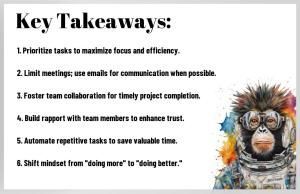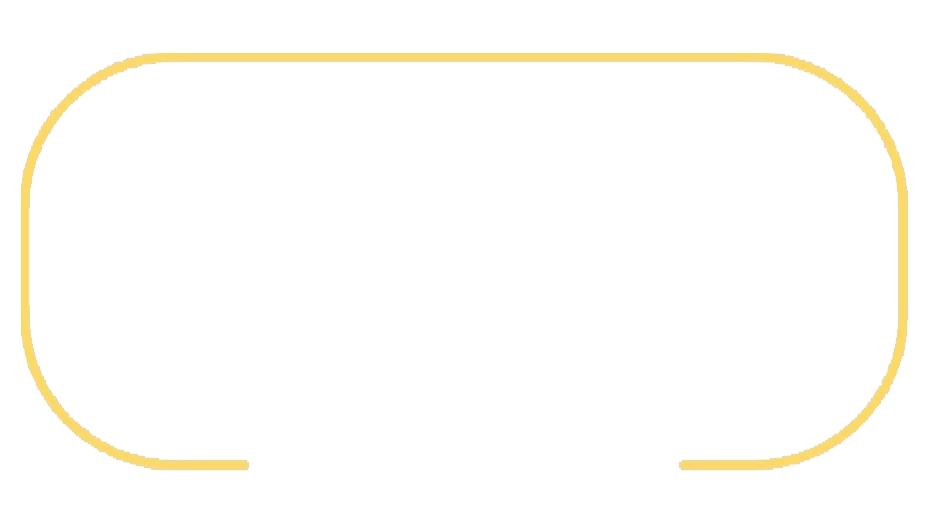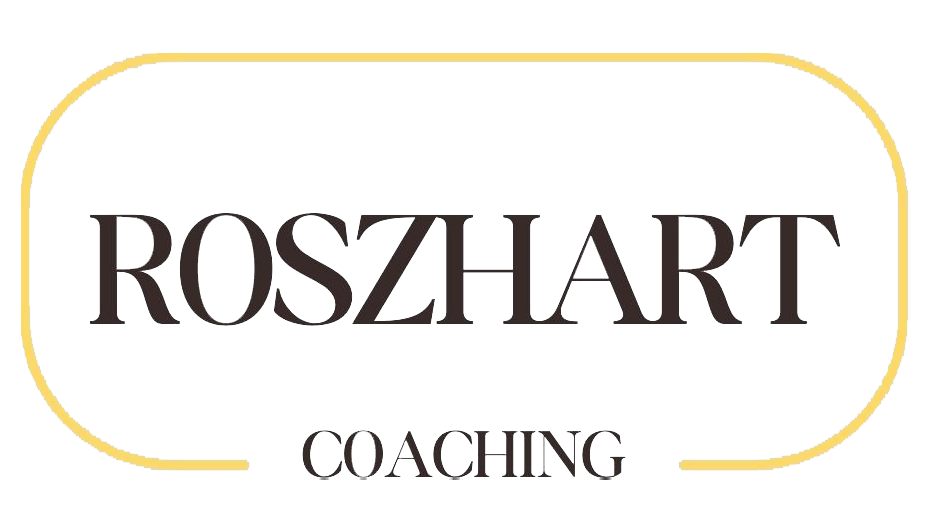Understanding Work Efficiency
Your journey towards enhanced productivity starts with grasping the core concept of work efficiency. It’s about maximizing your output while minimizing wasted time and effort. Rather than pushing yourself to work harder or faster, work efficiency means streamlining processes and prioritizing tasks strategically, allowing you to achieve or exceed your goals without sacrificing your well-being.
Definition of Work Efficiency
For efficiency to be effective, it encompasses organizing workflows, time management, and focusing on what truly matters in your daily tasks. It’s not merely a buzzword; it’s a guiding principle that allows you to navigate your responsibilities with greater ease and effectiveness.
Importance of Work Efficiency in Today’s World
Any modern professional understands the relentless pace of today’s work environment. As distractions like notifications and meetings can fragment your day, embracing work efficiency becomes crucial. It empowers you to manage your time better, maintain focus, and reduce stress, leading to improved job satisfaction and performance.
Efficiency has become more important than ever as organizations seek to remain competitive and agile. According to research by UC Irvine, a single distraction can derail focus for up to 20 minutes, highlighting the need for effective time management. By prioritizing efficiency, you position yourself to navigate complexities, meet deadlines, and seize opportunities for growth in your career.
Benefits of Improved Work Efficiency
Understanding the advantages of improved work efficiency can catalyze meaningful changes in your professional life. With higher productivity, you can accomplish more in less time, paving the way for a better work-life balance and increased satisfaction in both your personal and professional endeavors.
Plus, the rewards of better efficiency extend beyond your immediate tasks. As you streamline your workflows, you’ll find that projects are completed with fewer errors and delays, enhancing your reputation within your team or organization. This contributes not only to your individual success but also to the overall health of the business, leading to greater opportunities for advancement and career fulfillment.

Time Management Techniques
Some might underestimate the importance of mastering time management, but it is crucial for boosting your productivity and achieving a work-life balance. By implementing effective techniques, you can streamline your tasks, focus on what matters most, and reach your goals more efficiently.
The Power of Prioritization
Management begins with understanding what tasks are most crucial to your success. By prioritizing your daily activities using the “Power of 3” method—focusing on one main task and two stretch goals—you can eliminate distractions and hone in on what will move you closer to your objectives. This tactic leads to fewer mistakes and enhanced output.
Techniques for Effective Time Management
Power lies in how well you control your time. Techniques such as batching similar tasks, setting specific deadlines, and using timers can significantly enhance your efficiency. For instance, research has shown that distractions can derail focus for up to 20 minutes, so managing your environment to limit interruptions is necessary.
Management also involves utilizing time-blocking strategies, where you allocate specific periods for deep work or collaborative tasks. This method encourages focusing on fewer tasks at a time, empowering you to maximize productivity and minimize burnout throughout your day.
Tools for Tracking and Managing Time
Techniques for tracking your progress are invaluable in today’s fast-paced workforce. Utilizing tools such as time-tracking apps or project management software can help you visualize your workflow and allocate time effectively, ensuring you don’t overlook important tasks.
With various tools like Motion or Zapier available, you can automate repetitive tasks, schedule appointments seamlessly, and sync your calendar. These resources not only save you time but also provide insights into how your time is spent, enabling you to make informed adjustments to boost your overall efficiency.

Minimizing Distractions
To enhance your productivity, it’s crucial to minimize distractions that can derail your focus and efficiency. In a fast-paced work environment, distractions can come from various sources, both digital and interpersonal. Recognizing these distractions is the first step towards reclaiming your focus and maximizing your output.
Identifying Common Workplace Distractions
The typical workplace is filled with distractions that can significantly hinder your productivity. Common disturbances include constant email notifications, social media alerts, loud colleagues, and unplanned meetings. By identifying the specific distractions that affect your focus, you can take proactive steps to address them and create a more conducive work environment.
Strategies to Reduce Interruptions
One effective way to reduce interruptions is by implementing structured work hours and designated focus times. Let your colleagues know your availability and consider using tools to block distracting websites or mute notifications during crucial work periods. You might also explore task management apps that can help organize your day, reducing the mental clutter that often leads to distractions.
Understanding the dynamics of your work environment is vital for successful distraction management. Regularly assess which factors disrupt your workflow and adjust your habits accordingly. Consider creating a ‘distraction log’ to track when and why interruptions occur. This strategy allows you to identify patterns and develop solutions tailored to your needs.
The Role of Focus in Productivity
On a fundamental level, your ability to concentrate plays a critical role in your overall productivity. Research suggests that even brief distractions can cost you valuable time and mental energy, leading to decreased efficiency. By enhancing your focus, you’ll find that you can complete tasks more swiftly and accurately, paving the way for a more satisfying work-life balance.
It’s crucial to cultivate an environment that fosters deep focus. You can achieve this by setting clear boundaries with your workspace, practicing mindfulness techniques, and incorporating regular breaks to recharge. These methods not only help maintain your concentration but also enhance your creativity and problem-solving capabilities, ultimately leading to improved work performance.
Streamlining Communication
For you to boost productivity at work, it’s crucial to streamline communication. Effective communication can save time, reduce misunderstandings, and enhance collaboration within your team. By implementing structured ways of communicating, such as setting expectations for emails and messages, you can significantly improve your work efficiency. To learn more about valuable methods, check out 8 Strategies to Improve Work Efficiency.
Evaluating Meeting Necessity
The first step in streamlining communication is evaluating the necessity of meetings. Many meetings can become time-wasters that contribute little to your productivity. Assess your calendar and ask yourself whether a meeting can be replaced with a quick email or a brief chat. Simplifying this process can free up valuable time for focused work.
Alternatives to Meetings
An effective way to reduce time spent in meetings is to consider viable alternatives. Utilizing tools like instant messaging platforms or project management software can facilitate seamless communication without the need for a formal meeting. These tools enable you to share updates and collaborate in real time, keeping everyone in the loop without the interruptions that meetings can cause.
Communication is imperative to maintaining momentum in your projects. By leveraging tools such as Slack or Asana, you can create a collaborative environment that allows team members to stay connected and informed. Regularly scheduled check-ins can replace longer meetings, ensuring that everyone is on the same page without consuming excessive time.
Best Practices for Team Communication
Communication within your team should be clear, consistent, and considerate. Establishing a communication rhythm that includes regular updates can prevent uncertainty and help everyone align on priorities. Encourage team members to express their preferred communication styles, creating a more harmonious working relationship.
Plus, developing best practices for team communication fosters a culture of openness and trust. By creating a safe space for team members to share their thoughts and concerns, you improve engagement and boost morale. This leads to a more productive environment where everyone feels empowered to contribute meaningfully.
Collaborating Effectively
Now, effective collaboration is vital for enhancing work efficiency and achieving shared goals within your team. By fostering a culture of open communication and mutual support, you not only streamline project timelines but also create an enjoyable work environment that enhances overall productivity.
Building Strong Team Relationships
Any team thrives on solid relationships among its members. By taking the time to get to know your colleagues, you build trust and rapport, which can enhance cooperation and facilitate a smoother workflow. Understanding each other’s strengths and weaknesses can also make it easier to delegate tasks based on team members’ unique skill sets, ultimately leading to improved outcomes.
Understanding Different Communication Styles
Communication is key to successful collaboration, and recognizing different communication styles within your team can make a significant difference. Each individual may prefer different methods and tones, so adapting your approach can lead to more effective interactions.
Effectively managing communication styles involves being aware of how each team member prefers to engage. Some may communicate best through direct, straightforward messages, while others may appreciate a more casual or empathetic approach. By keeping these preferences in mind, you can tailor your interactions to ensure clarity and encourage open dialogue, ultimately leading to better teamwork.
Utilizing Collaborative Tools and Platforms
An array of digital tools can greatly enhance collaboration in the workplace. From project management software to communication platforms, leveraging technology can save time and streamline tasks, keeping your team aligned and productive.
This means implementing the right tools for your team’s needs, such as Slack for quick chats, Trello for project management, or Zoom for virtual meetings. By integrating these collaborative platforms into your daily workflows, you can reduce the time spent on unnecessary meetings and emails, allowing your team to focus on what truly matters while accomplishing goals more efficiently.
Setting Clear Goals
Once again, it’s vital to emphasize the significance of setting clear goals in your professional journey. Defining what you aim to achieve helps direct your efforts and maintain your focus on tasks that truly matter.
The Importance of Goal Setting
Goal setting is a critical component in the pursuit of work efficiency. It allows you to clarify your intentions, prioritize tasks effectively, and allocate your time and resources where they can make the most impact. When you have clear goals, you can better navigate distractions and maintain motivation.
SMART Goals Framework
Goals need structure to be effective, and the SMART framework provides that critical structure. Each goal should be Specific, Measurable, Achievable, Relevant, and Time-bound, ensuring that you are not only aiming for lofty achievements but also creating a realistic pathway to reach them.
This framework allows you to outline each goal in a way that provides clarity and accountability. For example, rather than simply stating “I want to be more productive,” you could specify, “I will complete three major projects over the next two months, dedicating at least five hours a week to each.” This clarity aids in tracking progress and making necessary adjustments along the way, thus enhancing your overall efficiency.
Regularly Reviewing and Adjusting Goals
Goals should not remain static; regularly reviewing and adjusting them is crucial. As you progress, you may find that certain goals need to evolve or be broken down further to remain relevant and achievable.
For instance, if you notice that a particular target is consistently being missed, take the time to reassess its feasibility or the steps required to achieve it. By incorporating regular check-ins—perhaps weekly or monthly—you can remain agile in your approach, ensuring that your goals align with your current capacity and priorities, ultimately leading to sustained productivity and satisfaction.

Leveraging Technology
Unlike traditional methods of working harder, leveraging technology can help you significantly boost your productivity and improve work efficiency. By integrating the right tools and systems into your daily routine, you can streamline your tasks, minimize distractions, and focus on what truly matters in your career.
Productivity Tools for Efficiency
An array of productivity tools exists to help you manage your time better and enhance your output. From project management software to task organizers, these tools allow you to prioritize your workload effectively, minimizing time lost to distractions and unproductive tasks.
Automation of Repetitive Tasks
One of the most powerful ways to enhance your efficiency is by automating repetitive tasks. By using various software solutions, you can set up systems that handle routine processes without needing your constant oversight.
For instance, using tools like Zapier to connect different applications can free up your valuable time. Imagine automatically scheduling appointments in your calendar or sending follow-up emails without manually doing any of the work. This automation not only reduces the chances of error but also allows you to allocate your energy toward more strategic initiatives that align with your career aspirations.
Innovative Software Solutions
For those looking to enhance their workflow, finding innovative software solutions can provide the edge you need. The right applications not only assist in task management but also foster collaboration among team members, even in a remote work setting.
A good example is platforms that integrate communication and project management, enabling you to track progress and engage with team members in real-time. These solutions not only keep everyone on the same page but also alleviate the stress of miscommunication and missed deadlines, allowing you to focus on achieving your goals with greater ease.
Creating a Supportive Work Environment
Many professionals underestimate the powerful role that a supportive work environment plays in boosting productivity and work efficiency. When you foster an atmosphere of collaboration, trust, and open communication, your team is more empowered to reach their full potential. This encourages innovation and markedly reduces the time spent on problem-solving, ultimately leading to better outcomes for both individuals and the organization.
The Impact of Workplace Culture
For you, understanding the influence of workplace culture is crucial for optimizing team performance. A positive culture enhances job satisfaction, increases retention rates, and bolsters collective efficiency. When employees feel valued and supported, they are more likely to engage fully in their tasks, which translates to tangible benefits for both the workforce and the company.
Promoting Work-Life Balance
With the increasing demands of a fast-paced work environment, promoting work-life balance should be a priority. Establishing boundaries that allow for personal time ensures you and your team can recharge, reducing burnout and increasing overall productivity. A balanced approach encourages the fulfillment of both professional and personal responsibilities.
Culture that promotes work-life balance not only enhances employee satisfaction but also correlates with increased productivity. When you advocate for flexible work arrangements, encourage taking time off, and respect personal boundaries, your team will likely experience reduced stress levels. This empowerment leads to higher retention rates as employees feel cared for and motivated to contribute their best work.
Encouraging Employee Well-Being
Creating a focus on employee well-being is imperative for improving work efficiency. When you prioritize mental and physical health, you nurture a more resilient workforce. Investing in well-being initiatives pays off as employees experience increased engagement and motivation, which directly contribute to achieving organizational goals faster.
To foster an environment that champions employee well-being, consider implementing wellness programs, providing access to mental health resources, and encouraging open discussions about work-related stress. By making well-being a priority, you empower team members to thrive both personally and professionally, ensuring that they remain committed and high-performing in their roles.



